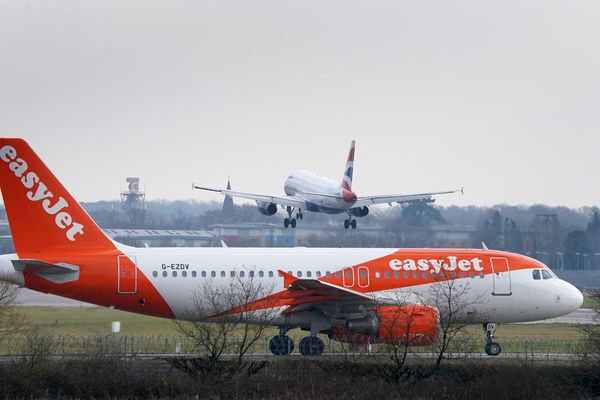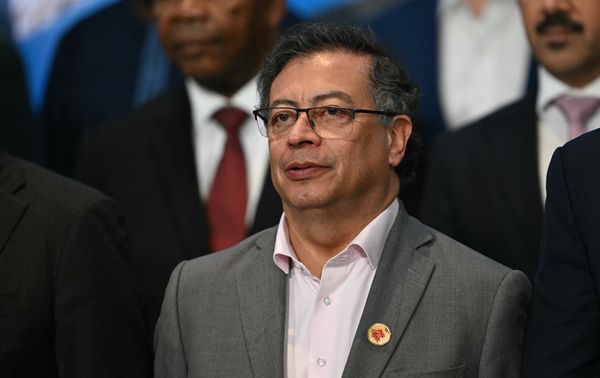Notwithstanding the warmth of the embrace when Volodymyr Zelensky left his talks with the prime minister in Downing Street, the president of Ukraine has been left isolated and, disgracefully, out in the cold as Donald Trump and Vladimir Putin meet in Alaska to discuss the fate of his country.
It may be that there can be no settlement on Ukraine without Ukraine, as European leaders and Mr Zelensky himself tried to tell President Trump during their virtual meeting. But the framework for that settlement will unquestionably be constructed far away from Kyiv.
Sir Keir Starmer was right to put on such a public display of solidarity with his friend Mr Zelensky. His contribution to the peace process has been valuable. He has also leveraged his own mutually respectful relationship with Mr Trump to the benefit of Ukraine and European security. He will need to maintain that pressure in the coming weeks, because these are going to be worrying times for all those who have backed the right of the people of Ukraine to determine their own destiny, and have hoped for Russian aggression to be left unrewarded.
Of the two men in whose hands rest the future prospects for peace in Europe and the wider world, it is clearly the Russian leader who has the clearer idea of what he wants and how to get it. In the first place, he has already secured one goal – to be treated as a co-equal partner of the United States in settling the dispute. Europe, including Britain, is also absent from the Alaska summit, and the “optics” of the Trump-Putin meeting can only boost Russian prestige.
In agreeing to this summit, President Trump has instantly transformed Putin from the pariah leader of a rogue state into a global statesman welcomed on American soil. Mr Trump was irritated when Emmanuel Macron pointed out to him the great prize he was handing to Putin, but it is the truth.
As to Putin’s strategic aims, they remain unchanged since he launched his unprovoked invasion in February 2022, and indeed since he annexed Crimea and parts of eastern Ukraine in 2014. He wants Ukraine. All of it.
The Russian leader will use all of the means at his disposal to secure this, as part of a wider and undisguised plan to restore as much as he can of the territories lost after the fall of the Soviet Union in 1990. Sometimes, as now, it involves diplomacy. At other moments, it means a military operation. It always involves mendacity – and Putin has betrayed every agreement he has ever signed with Ukraine.
With the Russian meatgrinder making its slow, incremental advances on the front line, Putin has the luxury of knowing, or at least believing, that he is in a win-win situation. If the talks succeed and lead to changed borders, inevitably to Russia’s advantage, that will amount to success for Putin personally. It will mean that the substantial gains he has made are de facto established for the longer term, and that is more than sufficient for the time being.
Whether any agreement involves “land swaps”, mineral deals, future “security guarantees” or anything else, the Russian Federation will be larger, and Ukraine weaker, than was the case before the war started.
Aggression will be rewarded, and the rule of international law set aside. It may not be what Putin dreamed of when he launched his “special military operation”, but he will gladly declare victory. As a bonus, he might find that the US bullies Ukraine into renouncing its ambition to join the European Union and Nato, and that the only foreign troops allowed near the new frontier will be a token force of useless United Nations “peacekeepers”.
Soon after such a deal is made, the US will lift its sanctions (Mr Trump will expect Europe to follow suit), and the attempts to make more lucrative commercial deals with Russia will resume. The Russian war machine can retool on the basis of resumed trade and economic growth.
If the talks “fail”, then Putin will simply carry on bombing Ukrainian civilians and sacrificing 1,000 young Russian lives every week, as Russia absorbs Ukraine village by village, town by town.
Mr Trump threatens “very severe” consequences if a ceasefire is not agreed. Yet, confusingly, he also talks about the summit as a mere “listening exercise”, a “feeling out” of possibilities, and suggests it will be followed by a much more important second summit, perhaps including Mr Zelensky, perhaps not.
It is hard to believe Mr Trump has the knowledge or the desire to sit around with Putin discussing the fate of Zaporizhzhia and Kherson, which is probably just as well. The Trump school of summitry is to do things in reverse – the ceremonial, symbolic handshakes come first, while the detailed work by the diplomatic “sherpas” follows later. This is obviously not going to be to Ukraine’s advantage, or that of the US, especially if the fighting is allowed to continue. Mr Trump’s aims in this exercise aren’t clear, though a rapprochement with Russia is probably still an ambition.
This is a moment, too, when European leaders have to decide what they want. The goal of a fully free and sovereign Ukraine, with all of its territory restored, is probably unrealistic, or at least until the Russian economy collapses. But Russian domination at the border of the EU is also unthinkable. How willing, in other words, is the “coalition of the willing”, including powers outside Europe, going to be to continue to arm and defend Ukraine?
It is a question that few seem ready to face up to – and one on which Sir Keir has to continue to take a lead.
Can Zelensky the warrior cut it as a peacetime leader?
What a cheek! The US is in no position to lecture us about free speech
Is Keir Starmer just one crisis away from a Labour coup?
When Trump and Putin go head to head, who wins?
Policing must strike a balance between transparency and justice
If stopping the boats were simple, it would have happened by now







